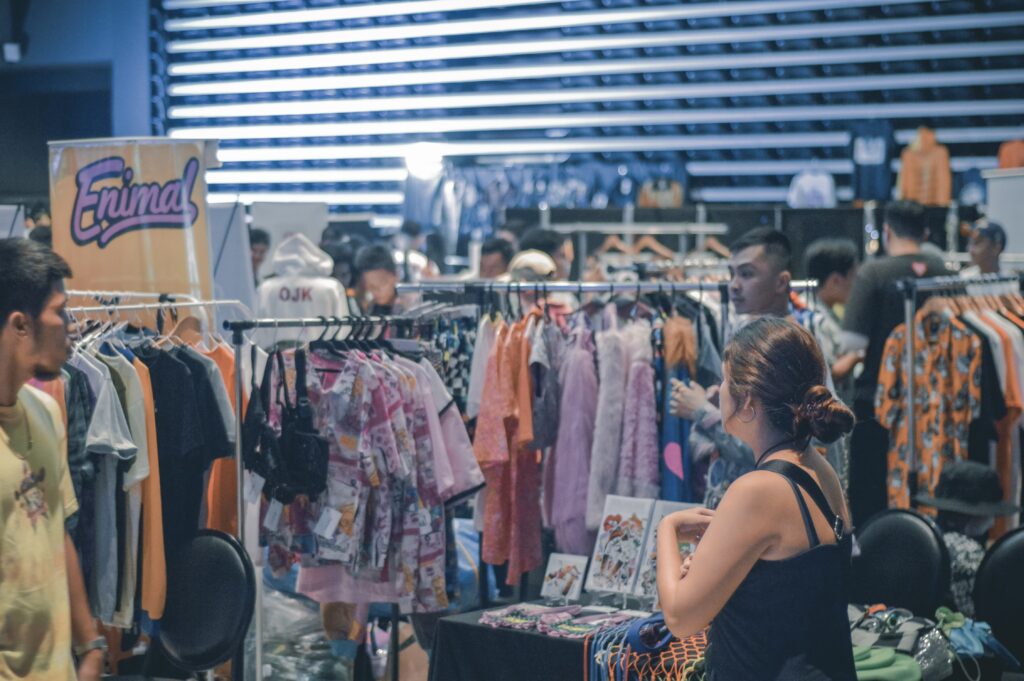Here are four things to look for when buying eco-friendly garments.Fashion’s dirty little secret is increasingly neither little nor secret, but it is indeed dirty.
Fashion has emerged as one of the biggest sources of pollution on the planet. According to a study by the United Nations Environmental Programme, the fashion industry produces 20 percent of global waste water, and 10 percent of global carbon emissions — which is more than all international flights and maritime shipping combined. UNEP likewise reports that textile dyeing is the second biggest polluter of water globally.
The clothes we wear, in other words, are not wearing well on planet Earth.

But what can be done? We can’t boycott clothes. A worldwide nudist movement would make a great science-fiction scenario, but in the real world…not so much. Fashion is a force of both beauty and necessity and will continue. It’s how we go about clothing ourselves that must change.
This is the empowering part of the story: we are the fashion industry. Each and every one of us who buys garments, as well as those of us who produce clothing, has the ability to create a new, sustainable way of doing things. Every purchase you make matters. The more we support sustainably made clothing, the more sustainable the fashion industry becomes.
Here are four things to look for when buying eco-friendly garments:
Buy well
Look at the labels on the garments you are considering buying. Not all fabric is created equal. Avoid synthetic fabrics like polyester and nylon, which are basically oil in the form of clothing. Each is made from petroleum, coal, air, and water, and is incredibly energy-intensive to produce. Additionally, these fabrics break down into microfibers and end up in our oceans and rivers and eventually our food chain. Another fabric to avoid is conventionally grown cotton, which requires huge inputs of pesticides (another petroleum product) and requires enormous quantities of water. According to UNEP, it takes 2,000 gallons of water to produce a typical pair of jeans.
Look for natural fibers such as organically produced hemp and linen, which grow with very little water and no petrochemical inputs. Bamboo-based fabrics likewise use little water, but tend to utilize chemicals in their production; bamboo linen is the most eco-friendly.
Cotton is a trickier dilemma; it accounts for half of all fabric used in clothing and is difficult to replicate for its softness, so it is largely unavoidable. Organic cotton is far superior to conventional, using less water and no pesticides, but the best choice is recycled cotton. According to the Higg Materials Sustainability Index, recycled cotton vastly reduces water and energy consumption and also helps keep cotton clothes out of landfills, making it one of the most sustainable fabrics available.
Some of the most exciting breakthroughs in sustainability are in the production of extremely eco-friendly synthetic fabrics. Tencel, for example, is a light, breathable fabric that is made from dissolved wood pulp and rivals cotton for softness. Piñatex is made from pineapple leaf fibers and is used as a vegan replacement for leather.
Buy Less
So often the most powerful solutions are the simplest. Every year, 100 billion articles of clothing are purchased worldwide, according to a McKinsey & Company report. Most of these garments will eventually end up in landfills, making way for more clothes in your closet. Data collected by the Environmental Protection Agency found that the average American throws out 81 pounds of clothes each year. The way to waste less is to buy less. Or buy reused clothes. Or trade clothes with friends. One idea: throw a clothing swap party, where everyone brings clothes they don’t want anymore, finding a better fit with friends. Buying less can be fun.
Buyer Beware
The greenwashing of the fashion industry is underway. Brands are using marketing, such as H&M’s “Conscious Collection,” to promote themselves as eco-minded and sustainable. But like H&M, which was called out by the Norweigian consumer production bureau, many of these brands do not offer any proof that their products utilize any sustainably produced materials. Claims of eco-friendly garments should be scrutinized. Look at labels. Identify the fabrics. Reward the brands that are really walking the walk, and beware those who are just utilizing sustainability as a marketing buzzword.
Buy Local
This is not always possible. Clothes are not made everywhere. But when possible, look for locally made garments, made with locally produced materials. This lowers the carbon footprint of whatever you wear, eliminating the transportation system’s chain of supply and all the energy consumption it entails.
The brilliant food writer and environmental thinker Michael Pollan came up with a simple set of rules for eating in a way that is both healthy and eco-friendly: “Eat food, mostly plants, not too much.” We can think about our clothing purchases in much the same way: Buy clothes, sustainably produced, not too much. Living lightly upon the Earth in our consumer society means slowing down and giving a bit more attention to everything we do. Developing eco-friendly clothing habits happens one garment at a time.
ABOUT THE AUTHOR
Franciska Bray-Mezey is the founder of Aura7 Activewear. Her company’s mission is to address one of the worst culprits in all fashion production — activewear, which tends to use the most pollution-producing materials of any kind of clothing — by using yarns made from recycled fabric straps and recovered fishing nets. She is a devout yogi and a mother of three beautiful boys who moved to California from Hungary and over time recognized the need for activewear that is not only fashionable, high-performance, and comfortable, but also keeps our planet intact so the next generation can experience the miracles of our beautiful Earth. See Aura7Activewear.com for more information, or take a yoga class with Franciska on the Aura7 YouTube channel.
Content from-
